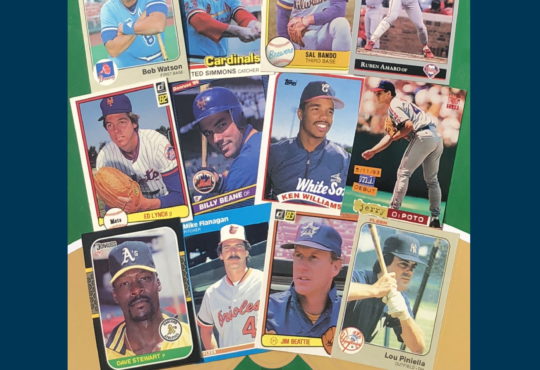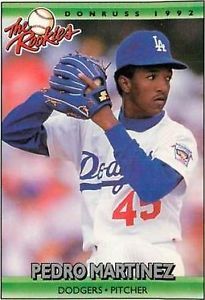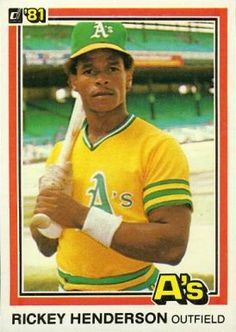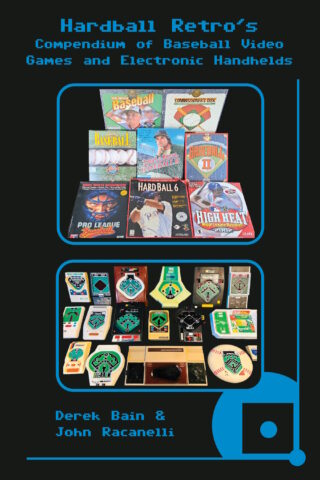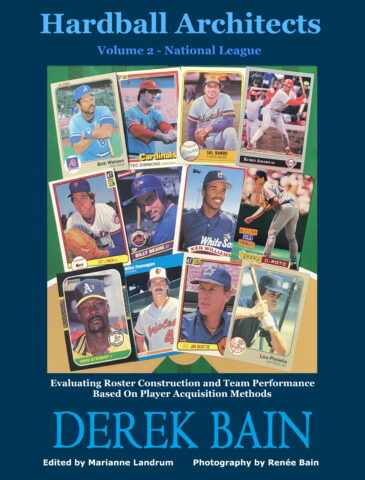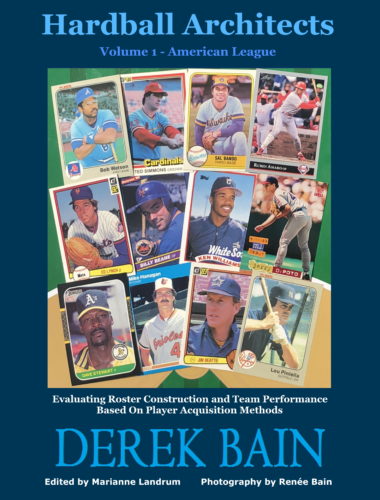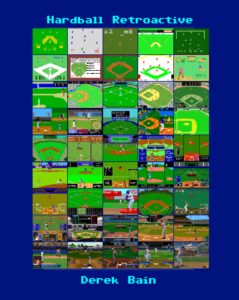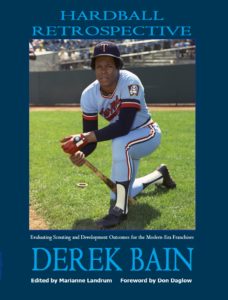
Hall of Fame Voting, WAR as a Rate Stat, and Where David Wright Fits In
It may seem ridiculous, but David Wright’s career was a lot better than one might think. Arguably the most beloved member of the organization’s history, the Captain of Queens gave the city 11 years of excitement before battling back and neck injuries over his final three seasons. However, given his recent retirement, it is time for what every long-time All-Star caliber player goes through following their “hanging ’em up” — and that is the inevitable “case for the Hall of Fame” discussion.
Before we jump into his actual production, I think it’s important to note how Hall of Fame voting *should* take place. Player X should be evaluated in comparison to the others at his position when it comes to his hitting or pitching production. Comparing Larry Walker (right field) and Mike Piazza (catcher) would be less than ideal because the two played vastly different positions that included varying positional adjustments, as well as different expected positional run production — it is a lot more difficult to sustain a high level of run creation as a catcher, shortstop, centerfielder than say a corner outfielder or first basemen because of the toll playing those positions have on one’s body over the course of a season/career. Each position has its own variables that need to be taken into account and we are doing players a disservice while making a comparison if we note those variables for one player, while not even having the option of doing so for the other. Now, player value based on WAR is a bit different in that it is already weighted to balance out the positional scale, so to speak. So it’s easier to compare a catcher and a shortstop through WAR. I prefer comparing players to others at their position because it is a more seamless comparison. While WAR does a good job of balancing out those different variables, we still get a better picture of how good a player was at his particular position if we compare him to the entirety of that position.
In addition to focusing on the position group, I think it’s important to not get too caught up in the longevity of a player’s career, to an extent. Sure, if a player plays five years in the bigs and dominates each year before a career ending injury, then he probably shouldn’t be enshrined in the Hall of Fame. However, if someone plays 11 seasons and is dominant at his position for the majority of his career, a player who plays 20 seasons and is dominant for the same amount of years before significantly dropping off at the tail end of his career shouldn’t gain more merit simply because they played nine more years of below average to average baseball. Looking at WAR on a per season, per game, or per X amount of plate appearances basis would allow very worthy and underrated players to shine more than usual because they didn’t play excessive sub-replacement level years. In addition, it would allow us to see how some “legends” may have underperformed more than we were lead to believe.
Which leads us back to Wright…in terms of production over the course of one’s career, Wright is right there with the best of them. Among all third basemen with at least 6000 plate appearances since 1900, Wright sits tenth in wRC+ at 133, 16th in wOBA at .373, and ninth in OPS. Of the 34 third basemen with at least 350 career doubles, only one has less plate appearances than Wright, who sits 24th on the all time doubles list with 390. He is one of four third basemen in baseball history to hit more than 200 home runs and steal more than 190 bases in his career. Wright was the 12th most valuable third basemen at the plate in terms of offensive runs above average (“Off” on Fangraphs).
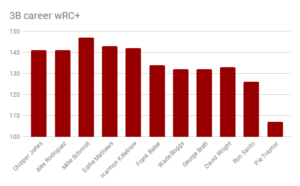
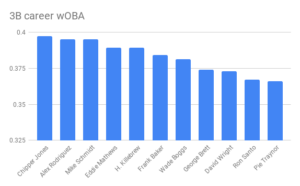
With offensive studs like Wade Boggs and George Brett closest to Wright in batting value, it’s fair to wonder why Wright doesn’t get more Hall of Fame love outside of Mets fandom. Of the top 30 third basemen in career WAR, Wright’s 52.3 sits a solid, yet probably unworthy of the Hall of Fame, 26th. What changes his outlook and makes that more impressive is that only two of those 30 played less games than Wright. Having found it difficult to find WAR data turned into rate stats rather than counting stats, I took the top 30 third basemen in career WAR and turned their total WAR into a WAR per 150 games played (WAR/150). It was very interesting to see certain guys already in the Hall of Fame drop, like Brooks Robinson, as well as seeing guys currently campaigning to get in rise, like Scott Rolen and Edgar Martinez (yeah, he was a 3B for a while before switching to DH). But for the purpose of the article, let’s stay focused on Wright.
*Note: I used 150 games instead of a full slate of 162 because it is incredibly uncommon for a player to play in all 162 games. There will be rest days, minor tweaks and bruises, etc.
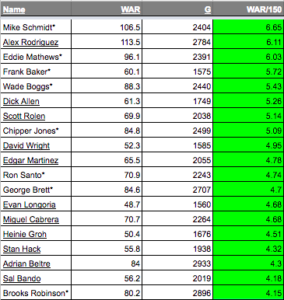
While current members of the Hall like Brett, Santo, and Robinson did it longer, Wright was better than them on a per season basis. Don’t get it wrong, there is a lot to be said about someone who played at the highest level for a longer period of time, but if someone’s career ends after 11 seasons worth of games compared to 19 for another, we have to take into account what those players did on a per season basis. Career longevity should not be the ultimate deciding factor. Eleven full seasons in addition to three part time seasons, like Wright’s, is a lengthy career, yet it gets lost in translation when put up against certain Hall of Fame members who played an absurd 18+ seasons. For some reason the voting committee is infatuated with players who played well past their prime — when majority of those guys were borderline worthless in the twilight of their careers — like it’s some skill to take the field and produce at a sub-replacement level.
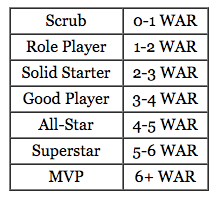 There are two third basemen in the Hall who played the same or less seasons than Wright. He sits ninth all-time with a WAR/150 of 4.95 — .05 WAR away from being one of nine third basemen to average five wins every full season. This tells us that while he wasn’t on the field as long as other Hall members, he was one of the most dominant at his position when he was. Fangraphs classifies a 4–5 WAR player as “All-Star” and 5–6 as “Superstar.” Given that scale, Wrights 11 full seasons worth of games at a All-Star to Superstar level of play is quite remarkable and vastly under-appreciated.
There are two third basemen in the Hall who played the same or less seasons than Wright. He sits ninth all-time with a WAR/150 of 4.95 — .05 WAR away from being one of nine third basemen to average five wins every full season. This tells us that while he wasn’t on the field as long as other Hall members, he was one of the most dominant at his position when he was. Fangraphs classifies a 4–5 WAR player as “All-Star” and 5–6 as “Superstar.” Given that scale, Wrights 11 full seasons worth of games at a All-Star to Superstar level of play is quite remarkable and vastly under-appreciated.
A perfect example, and excuse the aside from Wright’s Hall of Fame case, of a player‘s career going far too long is Ken Griffey Jr. Now, before you get all upset, let it be known that I am in no way suggesting Junior should not be in the Hall of Fame. He should have been a unanimous induction, but for some reason couldn’t get three writers to include him on their ballot. However, the fact that he played 22 seasons should not have played into the decision to vote him in. Over his first 12 seasons, “the Kid” jumped out to an other-worldly 74.2 WAR — which without his last ten seasons would be good for sixth best all time amongst center fielders. Over those last ten years, he accumulated a WAR of 3.5. His counting stats kept piling up thanks to an extra decade, which masked his uselessness on a per season basis over that same decade. Using the WAR rate stats discussed earlier, Griffey’s first 12 seasons would’ve produced a WAR/150 of 6.63 (well above “MVP” level as described on Fangraphs WAR scale) and a WAR/100 PA of 1.01 (as seen on the chart above, only one third basemen with more than 6000 PA in the history of baseball averaged a WAR/100 of > 1). Thanks to his fantastically dreadful final decade, his career WAR/150 dropped to 4.36 and his WAR/100 PA to .69. If you broke up Griffey Jr. into two players, the first ending his career after those first 12 seasons and the second being the same Griffey Jr. who played all 22 seasons, the one who played just 12 would’ve had the more impressive career. For some reason we as fans, media, and other baseball community members have such an inclination to rely on counting stats to judge a player’s career, yet if we look between the lines, we see how misleading they can be.
Shifting back to Wright, two stats on Baseball-Reference that are excellent at portraying a player’s Hall of Fame worthiness in comparison to those already enshrined at his position are WAR7 (WAR over a player’s 7-year peak, not necessarily consecutive seasons) and JAWS (Jaffe WAR Score System). This is where we see some reasoning as to why Wright might not be suited for the Hall. The average WAR7 amongst third basemen in the Hall of Fame is 42.9 and the average JAWS is 55.6. Wright compares slightly below those averages at 40.2 WAR7 and 45.3 JAWS. In Wright’s case, I’m skeptical of putting too much emphasis on this compared to WAR/150 or WAR/100 PA. The reason his JAWS is farther from the Hall of Fame average than his WAR7 is because JAWS uses a player’s seven-year peak and averages it with the rest of a player’s career. As we saw over the last three seasons of Wright’s career, he couldn’t even play more than 38 games which expresses his value in JAWS as lower than his WAR/150 or WAR/100 PA might suggest.
All in all, the odds of David Wright making the Hall of Fame are slim, and I wouldn’t be totally surprised to see him stay on the ballot for just a couple of years. But based on his production and value through a per season perspective, Wright’s case is stronger than anyone thought — including myself. From his second year in the bigs in 2005 until 2013, Wright was the 4th most valuable player in all of baseball. While not voted by the media, he was far and away the most valuable player in the National League in 2007. Wright’s unfortunate injury ended his career earlier than I’m sure he had hoped. Luckily his value rate stats show that he belongs in the Hall of Fame discussion. Even if that’s a long shot, it should still be a sign that Hall of Fame voting needs an adjustment and the reliance on previous factors and misleading numbers is outdated.
